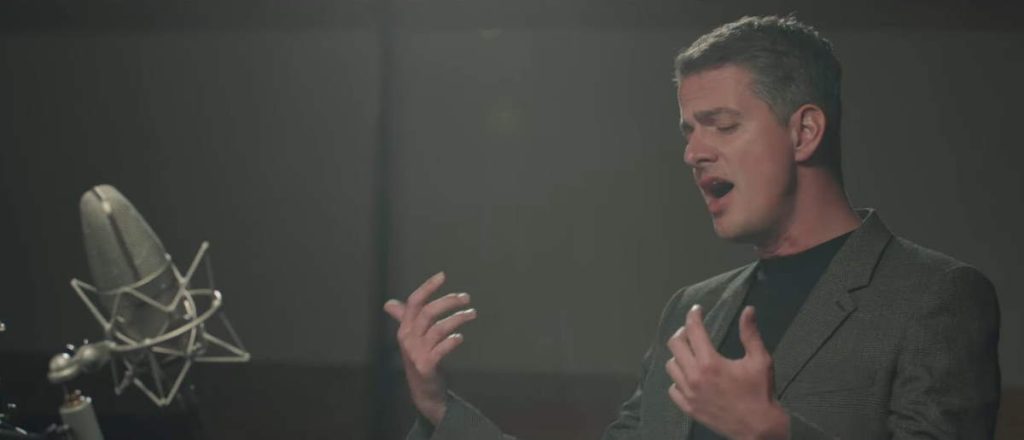Franco-Spanish classical guitarist Thibaut Garcia plays Asturias (Leyenda), a famous musical work written by the Spanish composer Isaac Albéniz (29 May 1860 – 18 May 1909). Recorded at the Chapelle des Carmélites de Toulouse, France.
Albéniz’s Asturias (Leyenda)
Asturias (Leyenda) was originally written for the piano and set in the key of G minor, and first published in Barcelona, by Juan Bta. Pujol & Co., in 1892, as the prelude of a three-movement set of the composer, entitled Chants d’Espagne. Many have attributed the first transcription for guitar to the Spanish composer and classical guitarist Francisco Tárrega (21 November 1852 – 15 December 1909) who put it in its most recognizable key, E minor.

The name Asturias (Leyenda) was given to the piece posthumously by the German publisher Hofmeister, who included it in the 1911 “complete version” of the Suite española, although Albéniz never intended the piece for this suite.
Despite the new name, this piece is not considered suggestive of the folk music of the northern Spanish region of Asturias, but rather of Andalusian flamenco traditions. Leyenda, Hofmeister’s subtitle, means legend in English. The piece is noted for the delicate, intricate melody of its middle section and abrupt dynamic changes.
Albéniz’s biographer, Walter Aaron Clark, describes the piece as “pure Andalusian flamenco” with the main theme that mimics the guitar technique of alternating the thumb and fingers of the right hand, playing a pedal-note open string with the index finger and a bass melody with the thumb. The theme itself suggests the rhythm of the bulería – a song from the flamenco repertoire. The ‘marcato’/’staccato’ markings suggest both guitar sounds and the footwork of a flamenco dancer.
The piece sounds as though it is written in the Phrygian mode which is typical of bulerías. The second section is reminiscent of a copla – a sung verse following a specific form. Clark states that it is written in typical Albéniz form as it is “presented monophonically but doubled at the fifteenth for more fullness of sound. The music alters between a solo and accompaniment that is typical of flamenco.
The short middle section of the piece is written in the style of a malagueña – another flamenco-style piece. The malagueña borrows two motives from the previous copla and builds on them. The piece returns to its first theme until a slow “hymn-like” passage ends the piece.
Many have attributed the first transcription for guitar to Francisco Tárrega who put it in its most recognizable key, E minor. However, according to guitarist and guitar scholar Stephen Yates, the first guitar transcription of the piece was probably by Severino García Fortea, although Andrés Segovia’s transcription is the most famous and most influential. The piece has become one of the most important works of the classical guitar repertoire.
Thibaut Garcia

Thibaut Garcia, the Franco-Spanish guitarist, was born in 1994 in Toulouse, where he began learning the guitar at the age of seven. He then won the guitar prize in the class of Paul Ferret. At the age of 16, he was admitted to the Conservatoire National Supérieur de Musique et de Danse de Paris, in Olivier Chassain’s class, while at the same time benefiting from the guidance of Judicaël Perroy.
At the age of 16, he was awarded the First Prize at the Ana Amalia competition in Weimar, Germany. Since then, he has won first prize in several international competitions, in particular, the Guitar Foundation of America at Oklahoma City, USA, in 2015, the José Tomas at Petrer, Spain, in 2014, and the International Competition of Seville, Spain, in 2013. Since then he has been asked to sit on their juries and to give master classes. In 2015, he was named sponsee of the Académie Charles Cros. In 2019, he was named ‘Instrumental Revelation’ at the Victoires de la Musique Classique.
In 2016, Thibaut Garcia made his concerto debut with the Orchestre National du Capitole de Toulouse. He appeared in other concertos in the next few months, especially with the Baden-Baden Orchestra, the Orchestre National de Montpellier, Orchestre de Cannes PACA, the Orchestre de Dijon-Bourgogne, and the BBC orchestras.
In 2017, Thibaut Garcia was appointed BBC New Generation Artist, which led him to perform in recitals and in concertos in the UK. That year he notably made his debut in London’s Wigmore Hall.
When it comes to chamber music, Thibaut Garcia has played with Edgar Moreau, Raphaël Sévère, Jean-Frédéric Neuburger, Antoine Mornière, Boris Grelier, Anaïs Constans, La Marca brothers, Kathryn Rudge…
In 2016, he signed exclusively with Warner Classics/Erato for his recording projects, with the first release being Leyendas. His second album, Bach Inspirations, was released in the fall of 2018.
Sources
- Thibaut Garcia biography
- Asturias on Wikipedia


